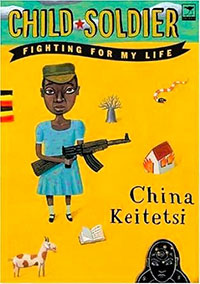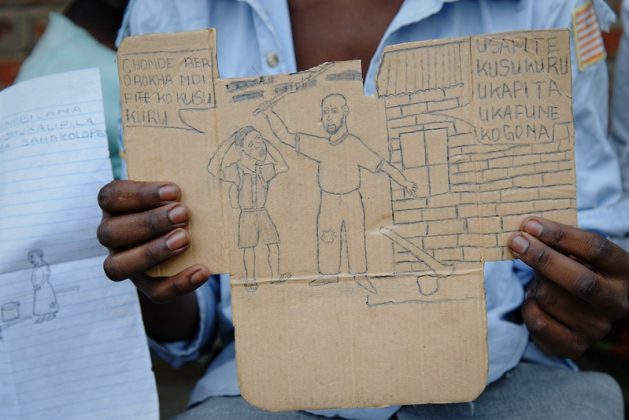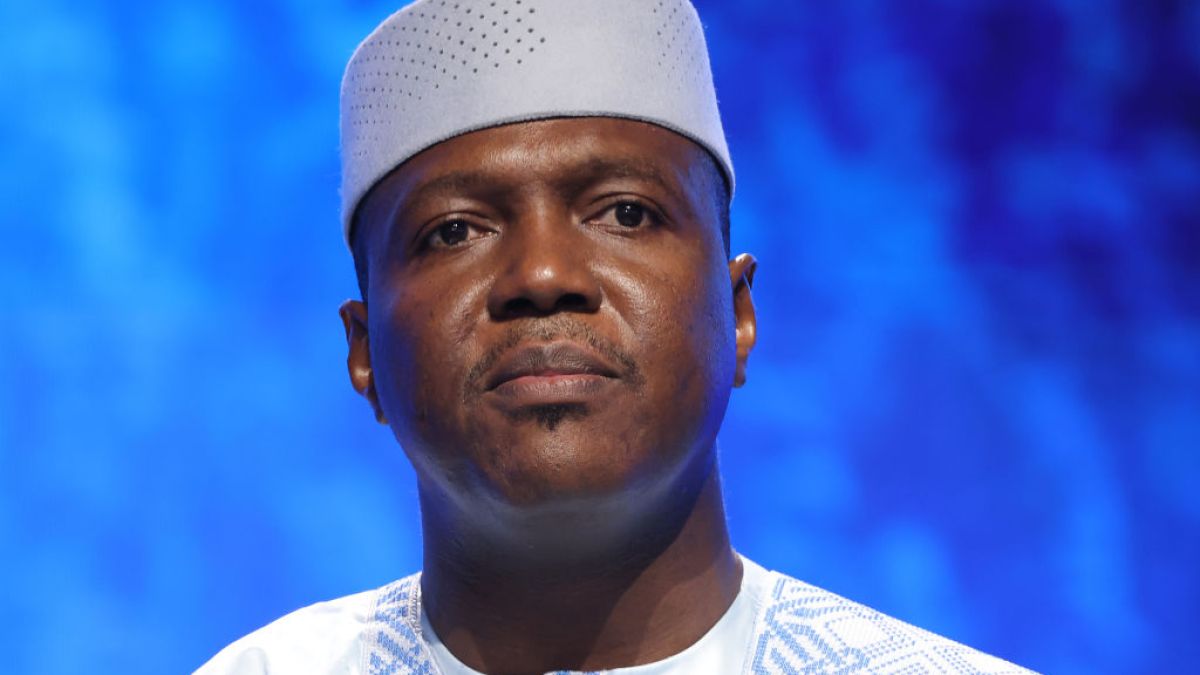Women and War — Global Issues
STOCKHOLM, Sweden, Oct 31 (IPS) – In 1968, the tobacco company Philip Morris introduced a new cigarette brand called Virginia Slims. Under the slogan “You’ve come a long way, baby” it was exclusively marketed to women. The advertising campaign exploited the civil rights movements of the 1960s, indicating that those cigarettes were enjoyed by strong, independent, and liberated women. A blatant lie – why would “independent” women choose to poison themselves with a commodity which each year causes more than 480,000 deaths in the US alone – nearly one in five deaths? Another question arising from this deceitful ad is: “How far have women come on their way to independence and liberation?”

War is not healthy and it is far from normal. It makes people abnormal, and its fatal effects linger. Furthermore, war is affecting men and women in different ways. It is driving up domestic violence, as stress levels raise when traumatized men return to their families after long spells on the front lines, finding their domestic situation changed.
War veterans returning from Germany after World War I committed more crimes against women than ever before. The same happened after World War II in the US and the Soviet Union, a country where as late as 1959 there were still 20 million more women than men due to male casualties from war and repression. This is just one indication that war is extremely gendered. Police reports of domestic violence spiked in the aftermath of Russia’s invasion of Ukraine. Many women and children fled the war and some of those who stayed behind bore the brunt of male frustration. Battered women confess: “With all due respect to our military, we may indeed find ourselves in a situation where a veteran returning from war will be respected and sympathized with to such an extent that such a minor offense as domestic violence may well be forgiven on all levels.” This occurs in Russia as well, and all over the world in countries suffering from armed conflicts. All levels of human interaction are affected by an unavoidable process of “militarization”, meaning that belligerent values become dominant, lingering long after armed aggression has ceased.
In modern warfare civilian casualties by far outnumber those of armed combatants. Defenceless civilians suffer human rights violations, while women are subjected to specific gender related abuses. Women and girls targeted by sexual violence often face insurmountable obstacles if they try to seek justice. Many suffer from social stigma, worsened by the fact that women and girls tend to have a disadvantaged social position . This despite the fact that women constitute the backbone of most communities. Their ideas, energy and involvement are crucial for maintaining resilience during conflicts, as well as they are important during the rebuilding of society in the aftermath of war. To ensure lasting peace, it is thus essential that women’s specific exposure to violence is recognized and that they are allowed to play an essential part at all stages of a peace process.
Combatting soldiers often find themselves surrounded by civilians who they consider to be their enemies, or even worse – inferior beings. It is quite common that soldiers are by their commanders’ eagerness to increase their fierceness are given licence to ignore normal boundaries of civil behaviour. Women might be perceived as upholding and embodying “enemy culture, and support”. Destroying the enemies’ domestic security and sense of cultural/ethnic belonging might become a military goal and violence against women thus becomes legitimized.
Attacks on women may sometimes focus on their role as mothers. During the Nazi regime’s ruthless extermination of Jews, Roma and Sinti, as well as several other ethnic groups, the elite troopers of SS considered their victims to be vermin “unworthy of life”. The leader of these ruthless exterminators, Heinrich Himmler, reminded them that not only grown-ups, but their children as well had to be killed: “Otherwise they will grow up and revenge themselves on their parents’ murderers”. Similar arguments have been used by other perpetrators of massacres on ethnic minority groups; killing children, destroying foetuses and mutilating women’s sexual organs to “eliminate guerrilla spawn”.

In more than 150 countries there are currently child soldiers within government and opposition armed forces and an estimated 30 percent are girls. China Keitetsi remembers :“We were bodyguards to our bosses, we cooked, and we looked after them, instead of them looking after us. We collected firewood, we carried weapons and for girls it was worse because we were girlfriends to many different officers. Today, I can’t think how many officers slept with me, and at the end it became like I don’t own my body, it’s their body. It was so hard to stay the 24 hours a day thinking which officer am I going to sleep with today.”
The widespread use of rape is common in any armed conflict. Rape is employed to intimidate, conquer and control women and all members of their communities. It is used as a form of torture to extract information, to punish and intimidate. Wartime rape is committed by a wide range of men. Even those mandated to protect civilians tend to sexually abuse women and girls under their care. Women may be targeted for rape not just because they are women, but also because of their social status, ethnic origin, religion or sexuality. In Rwanda, it is estimated that between a quarter and half a million rapes were committed during the 100 days of genocide between 7 April and 15 July 1994.
Rape is often accompanied by extreme brutality. Women and girls often die during the attack, or later of their wounds. This is particularly true of young girls. Other medical consequences include transmission of HIV and serious complications in reproductive health. Fear, nightmares and psychosomatic body pain are just some of the problems experienced by survivors. Sometimes women are raped in front of others, often family members, to deepen their sense of shame. Some rape survivors state they would rather die than let what has happened become public.
Widowhood and/or separation increase during armed conflicts and it is often women who have to flee and bring their children with them, since men and boys are targeted to be killed or forcefully recruited by warring factions. Homes are destroyed and entire families uprooted. The loss of the family home brings about specific problems for women, including rise in domestic violence, enormous practical and financial difficulties and a harmful dependency on strangers. Women and girls in flight may be forced to offer sex in return for safe passage, food, shelter and/or documentation. Government officials (such as immigration officials or border guards), smugglers, pirates, members of armed groups and male refugees have all been known to abuse refugee women in transit. Desperate women may be forced into illegal activities, putting them at risk for repercussions from authorities.
If homes have been destroyed and families evicted, women are particularly hard hit because of their responsibility for providing shelter and food for their families. Even in assumed “safe havens”, like refugee camps, women and girls are at risk of sexual exploitation by those who control access to food and supplies, and if they venture out of the camps to find water, food and fire wood, perpetrators may be lurking, ready to attack them.
A slogan like “You’ve come a long way, baby” is, to say the least, offensive to millions of women suffering hardship from war and displacement. The list of historical and current abuse and suffering of women in war is immense and constantly updated. Some examples:
During World War II women were by the Imperial Japanese Army forced into sexual slavery. Estimates vary with numbers ranging from as low as 20,000, to as high as 360,000 to 410,000 ( according to Chinese sources). In Europe, large numbers of women were during World War I “recruited” to “field brothels” by both warring factions and the practice was continued in the eastern territories occupied by the German army and its auxiliary forces. Even the horrific concentration camps were equipped with brothels.
During World War II, the eastern front was a veritable hell. German officers and soldiers were violating women and girls, while military commanders did not attempt to put an end to such atrocities. The Russian vengeance was horrible. The exact number of German women and girls raped by Soviet troops during war and occupation is uncertain, but historians estimate their numbers are likely in the hundreds of thousands, and possibly as many as two million. During the 1971 Bangladesh Liberation War, Pakistani military and so called Razakar paramilitary raped between 200,000 and 400,000 Bengali women and girls. There are no exact figures on how many women and children who were systematically raped by Serb forces in various concentration camps, estimates range from 20,000 to 50,000. In Eastern Congo, the prevalence and intensity of rape and other sexual violence is described as the worst in the world. A 2010 study found that 20 percent of men and 30 percent of women reported conflict-related sexual violence and the brutal bloodshed has not yet abated.
We may all agree that war is horrible and women and girls are suffering from its effects. However, we also have to admit that violence against women take such horrific proportions due to the fact that in most countries women are even in peacetime victims of misogyny, religious/traditional contempt and subjugation, unequal rights and a wide range of other types of discrimination. In war, injustices and mistreatment are multiplied many times over. One means to avoid the horrors of war would be to guarantee equal rights to women and men, ensuring that laws are enacted for that purpose, followed to the letter and that those who violate them are duly punished. Only then can women be said to have come a long way.
Main Sources: Keitetsi, China (2005) Child Soldier: Fighting for My Life. Johannesburg: Jacana Media. Lamb, Christina (2020) Our Bodies, Their Battlefield: What War Does to Women. Glasgow: William Collins. Wiiliams, Jessie (2023) “’This War Made Him a Monster.’ Ukrainian Women Fear the Return of Their Partners”, Time, March 13.
IPS UN Bureau
Follow @IPSNewsUNBureau
Follow IPS News UN Bureau on Instagram
© Inter Press Service (2023) — All Rights ReservedOriginal source: Inter Press Service
Check out our Latest News and Follow us at Facebook
Original Source






